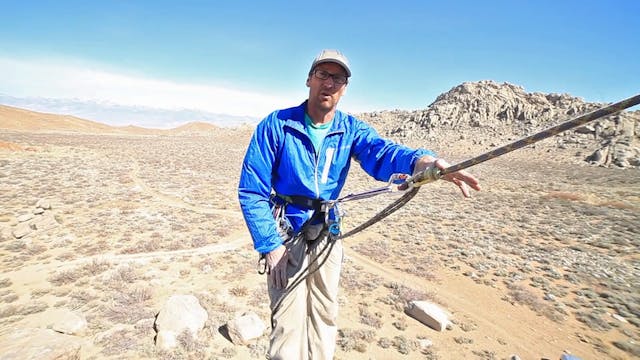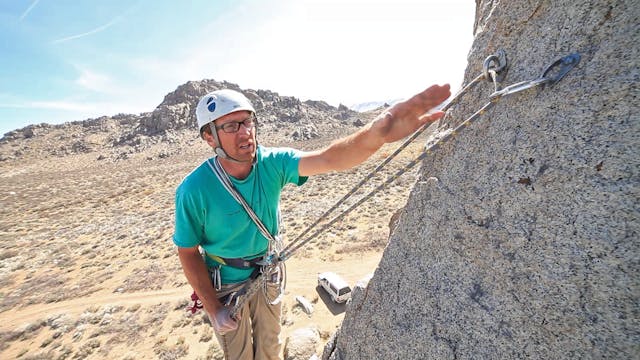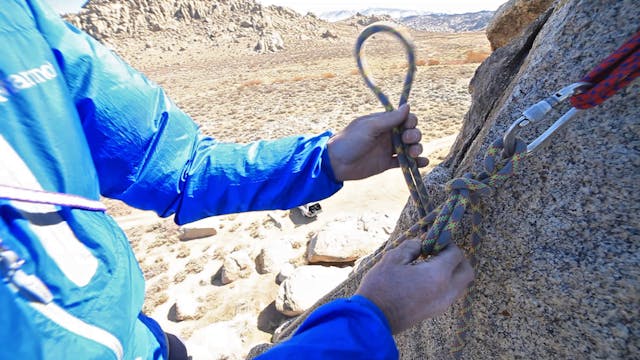Basic & Intermediate Outdoor Climbing: 11. Stopper Knots for Belay & Rappel
Basic & Intermediate Outdoor Climbing
•
2m 3s
In this video we review how to tie a “double overhand knot” or “stopper knot” to help prevent the rope end from dangerously slipping through the belay device and/or rappel device. Including a stopper knot at the end of the rope helps to “close the system”.
Step 1 - Towards the end of the rope, put a bight in the rope.
Step 2 - Create another bight, and overlap it behind the first bight so the two bights of rope criss-cross one another.
Step 3 - Take the tail end of the rope and thread it through the overlapping bight’s from behind, and pull it tight so the knot closes and forms an “X”. See above video for demonstration.
Belayers must make sure, if a lead climber ascends so far that they use all available rope, the rope’s end (aka the rope “tail”) does not slip through the belay device. Otherwise the leader becomes unprotected!
Belayers also use a stopper knot when lowering a climber on long routes. Always tie an effective stopper knot in the rope’s tail if the route length, including the length to lower back down, might be longer than the rope. Example: If a route is over 100 feet (130 meters) long, and the rope is only 200 feet (60 meters) long, then the belayer is in danger of letting the rope’s tail slip through the belay device, as they try to lower the single-pitch climber back to the ground.
Stopper knots are also important for rappelling, aka “on rappel”. With long rappel distances, the rope might be too short to reach the ground with only one rappel. Danger is minimized by closing the system with an effective stopper knot on each end of the rappel lines.
After finishing the rappel, on safe ground and/or properly anchored and “off rappel”, the climbers then untie each stopper knot, before pulling one side of the rope through the above anchor. Make sure to untie the stopper knot before pulling the rope… otherwise the stopper knot becomes stuck in the anchor!
We hope you found this video helpful. Feel free to comment below with questions or thoughts!
Please remember, climbing is inherently dangerous. Climb at your own risk.
Up Next in Basic & Intermediate Outdoor Climbing
-
Basic & Intermediate Outdoor Climbing...
In this video we review two ways to back up a belay device for a rappel.
Backing up the belay device using the rope above the device:
Step 1: Using the Sterling HollowBlock (or, in a pinch, a small loop of cordelette), tie the auto block friction hitch above the rappel device by wrapping th...
-
Basic & Intermediate Outdoor Climbing...
In this video we review how to clean a top rope anchor and rappel back to the ground when you have finished climbing a route. For this, you must have a proper rappel station with rings at the top of the climb. If not, be prepared to leave gear behind.
Step 1: Properly secure yourself into the ...
-
Basic & Intermediate Outdoor Climbing...
In this video we review how to tie the munter hitch, and then tie it off with the munter mule knot. A munter hitch can be used as a belay, in the case of a forgotten or dropped belay device. The mule is a way to tie off the munter to go hands free, fixing the line in place.
Step 1: Clip a lock...


